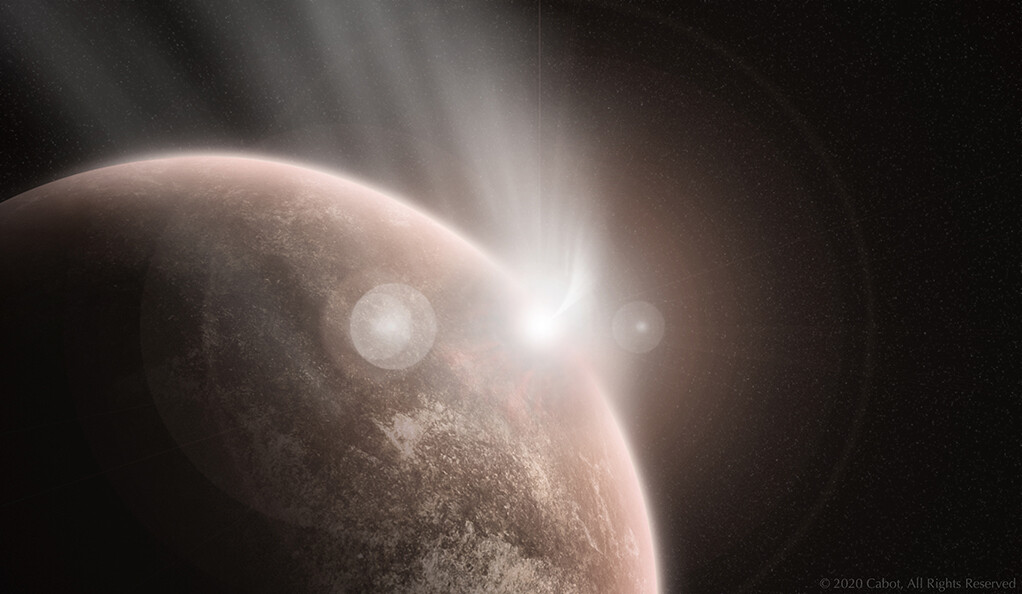Pieces of Venus may be hiding on the moon
The solar system is a messy place.

The moon may be hiding the scientific key to the mysterious past of our neighboring world, Venus.
Scientists think that Earth and Venus were once awfully similar. But then, something happened on Venus to turn it into the greenhouse-effect driven planet it is today. And now, new research proposes that the evidence of precisely how that shift played out may be tucked away in rocky time capsules on the moon, flung there by ancient collisions.
"The moon offers safe keeping for these ancient rocks," Samuel Cabot, a graduate student at Yale University and the lead author of the new research, said in a statement. "Anything from Venus that landed on Earth is probably buried very deep, due to geological activity. These rocks would be much better preserved on the moon."
Related: Photos of Venus, the mysterious planet next door
In the new research, Cabot and his co-author analyze how impacts on an early Venus could have sent geological time capsules to Earth's moon. This process has slowed considerably, but billions of years ago, more powerful impacts were more common than they are today, and because of the inner solar system's inherent traffic patterns, asteroids hitting Venus would be moving faster than those that hit Earth.
And at the same time, scientists think Venus might have looked much more like Earth does today, with a thinner atmosphere than its current carbon dioxide blanket — and perhaps even watery oceans on the planet's surface.
Those circumstances mean that when a hypothetical large impactor slammed into the planet, debris could have escaped the atmosphere, according to the researchers, which would now be impossible. And if it did, the debris would bear the geological fingerprint of any ocean Venus sported at the time.
Get the Space.com Newsletter
Breaking space news, the latest updates on rocket launches, skywatching events and more!
Then, there's the matter of getting those rocks to the moon. According to the scientists' models of the way orbits line up, Venusian material should reach the Earth-moon neighborhood fairly frequently. The researchers' calculations suggest that out of every 10,000 pieces of rock flung off Venus by impacts, about seven should have landed on the moon.
And on the moon, with no plate tectonics or wind erosion, everything that's hit the surface is still there somewhere, albeit perhaps buried or mangled by later impacts. Theoretically, the researchers write, future moon missions — or even simply additional analysis of the Apollo lunar samples — could identify Venusian material that was transplanted.
That material would tell the planet's story in a way unlike all of the evidence scientists have studied to date.
"An ancient fragment of Venus would contain a wealth of information," Gregory Laughlin, an astronomer at Yale University and co-author on the new research, said in the same statement. "Venus' history is closely tied to important topics in planetary science, including the past influx of asteroids and comets, atmospheric histories of the inner planets, and the abundance of liquid water."
The research is described in a paper accepted for publication by the Planetary Science Journal and available to read on the preprint server arXiv.org.
Email Meghan Bartels at mbartels@space.com or follow her on Twitter @meghanbartels. Follow us on Twitter @Spacedotcom and on Facebook.
Join our Space Forums to keep talking space on the latest missions, night sky and more! And if you have a news tip, correction or comment, let us know at: community@space.com.

Meghan is a senior writer at Space.com and has more than five years' experience as a science journalist based in New York City. She joined Space.com in July 2018, with previous writing published in outlets including Newsweek and Audubon. Meghan earned an MA in science journalism from New York University and a BA in classics from Georgetown University, and in her free time she enjoys reading and visiting museums. Follow her on Twitter at @meghanbartels.
-
Torbjorn Larsson I have long wished for a search for similar Earth ejecta on the Moon that could help elucidate our planet history. This is added use.Reply
And the Moon is now targeted for visits, including sample return, by various space agencies. -
Geomartian Reply
According to NASA parts of Elvis are also on the Moon.
One of the Moon rocks returned by the Apollo program was obviously felsic (like granite). According to NASA this rock was blown off of the Earth and landed on the Moon’s surface. To add to this incredible story an Astronaut would just happen to collect it.
NASA has been hiding the existence of interstellar asteroids (IA) which did produce the vast pools of basalt on the nearside of the Moon. IA also produce mantle plumes on both the Moon and Earth. The end product of some of these mantle plumes (after differentiation and partial melting) is felsic rocks like granite.
The felsic rock found on the Moon had originated on the Moon. The process that created minor granite on the Moon cannot exist without the melting produced by interstellar asteroids. NASA could not recognize IA or the mantle plumes that they can produce, so NASA lied. NASA said that the felsic rock had been blown out of Earth’s deep gravity well and that the Apollo Astronauts just happened to find it.









